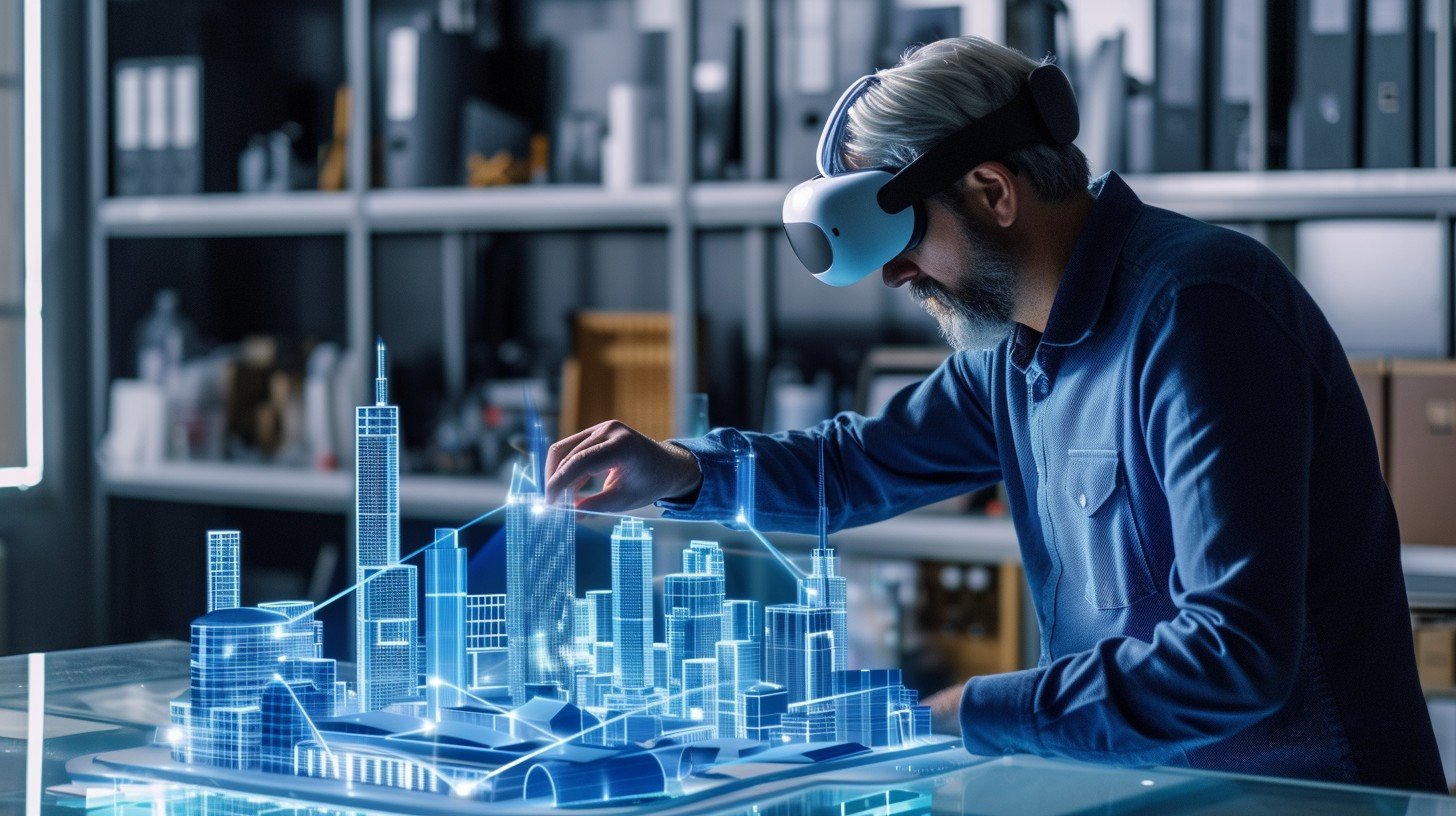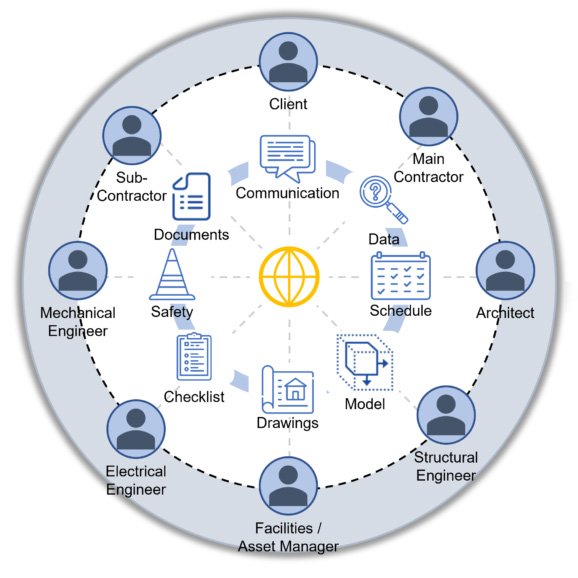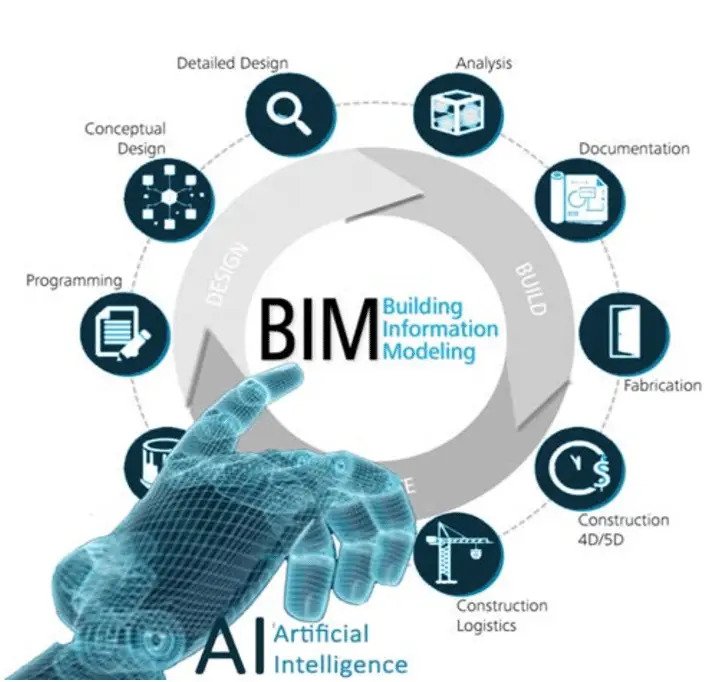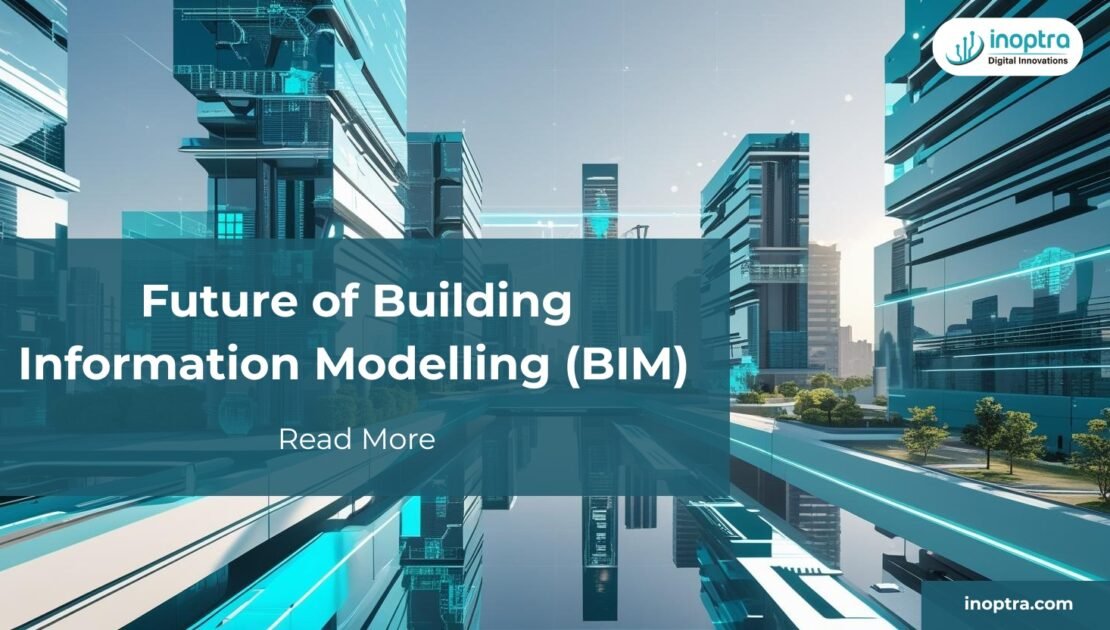What’s in the blog:
- 1. Integration with AI & Machine Learning
- 2. Cloud-Based BIM & Collaboration
- 3. Digital Twins
- 4. Sustainability & Carbon Tracking
- 5. BIM + IoT & Smart Sensors
- 6. Interoperability & Open Standards
- 7. 4D, 5D, 6D, 7D BIM
- 8. AR/VR & Immersive Technologies
- 9. Automation in Construction (Robotics + BIM)
- 10. Integration with Project Lifecycle Management

The future of Building Information Modeling (BIM) is set to be transformative, driven by emerging technologies, changing industry demands, and sustainability goals. Here’s a look at key trends and predictions shaping the future of BIM:
1. Integration with AI & Machine Learning
- Predictive Design: AI can suggest optimal layouts, materials, and structural systems based on past project data.
- Automated Clash Detection & Optimization: Faster and more accurate issue detection in early design stages.
- Generative Design: AI tools generate thousands of design options based on defined goals and constraints.
2. Cloud-Based BIM & Collaboration
- Real-time Collaboration: Cloud BIM platforms (e.g., Autodesk Construction Cloud, Trimble Connect) enable multiple stakeholders to work on the same model simultaneously, regardless of location.
- Version Control & Access: Anytime access to latest project data with better security and traceability.

3. Digital Twins
- BIM evolves into Digital Twin technology — creating a live, dynamic model of the building that updates throughout its lifecycle.
- Used for facilities management, real-time monitoring, and predictive maintenance.
4. Sustainability & Carbon Tracking
- BIM tools increasingly integrate carbon analysis, energy modeling, and material lifecycle tracking.
- Helps achieve green building certifications like LEED, BREEAM, etc.
5. BIM + IoT & Smart Sensors
- Integration with sensors allows real-time data flow into BIM models — e.g., temperature, occupancy, energy use.
- Supports smart buildings and better operational efficiency.
6. Interoperability & Open Standards
- Push for OpenBIM and standardization (like IFC, BCF) to enhance data sharing across software platforms and project phases.
- Encourages collaboration among architects, engineers, contractors, and owners.
7. 4D, 5D, 6D, 7D BIM
- 4D BIM: Adds time/scheduling
- 5D BIM: Adds cost estimation
- 6D BIM: Adds sustainability
- 7D BIM: Adds facilities management
- Future BIM will seamlessly integrate all these dimensions into unified project models.
8. AR/VR & Immersive Technologies
- Clients and teams can experience designs in virtual reality (VR) or overlay them on real-world sites using augmented reality (AR).
- Boosts client understanding and stakeholder engagement.
9. Automation in Construction (Robotics + BIM)
- BIM models guide robotic construction equipment, 3D printers, or drones for layout, surveying, and construction monitoring.
- Improves speed, accuracy, and safety.

10. Integration with Project Lifecycle Management
- BIM will not just be for design and construction, but entire lifecycle management, from concept to demolition.
- Stronger integration with ERP, FM, and asset management tools.
BIM is no longer just a 3D modelling tool—it’s becoming the digital backbone of the built environment, enabling smarter, faster, and greener construction and infrastructure management.


